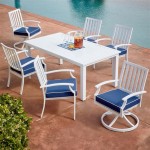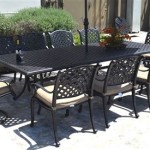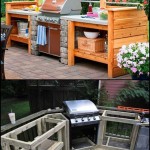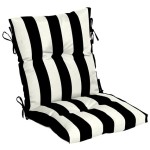Decorating With Outdoor String Lights: A Comprehensive Guide
Outdoor string lights offer a versatile and aesthetically pleasing way to enhance the ambiance of outdoor spaces. Their adaptability allows for various applications, ranging from illuminating patios and decks to creating a festive atmosphere for outdoor gatherings. Effective utilization of these lights requires careful planning and execution to achieve the desired effect while ensuring safety and longevity.
The primary advantage of outdoor string lights lies in their ability to transform a space with a soft, inviting glow. Unlike harsh overhead lighting, string lights provide a distributed light source that is both functional and decorative. They can define areas, highlight architectural features, and create a sense of intimacy, making them a popular choice for both residential and commercial settings.
Selecting the Right Type of String Lights
The market offers a wide variety of outdoor string lights, each with its own characteristics in terms of bulb type, material, and power source. Selecting the appropriate type is crucial for achieving the desired aesthetic and ensuring suitability for the intended application. Considerations should include the overall style, the intended use (e.g., ambient lighting versus task lighting), and the prevailing weather conditions.
Bulb type is a significant factor. Incandescent bulbs offer a classic, warm glow but are less energy-efficient than LED alternatives. LED string lights are increasingly popular due to their longer lifespan, reduced energy consumption, and cooler operating temperature. They are also available in a wider range of colors and styles, allowing for greater design flexibility. Furthermore, LED bulbs are less prone to breakage than incandescent bulbs, making them a more durable option for outdoor use.
The material of the string and sockets is also important. Opt for weatherproof and waterproof options, particularly in areas with frequent rainfall or extreme temperatures. Look for lights with heavy-duty wiring and durable sockets designed to withstand the elements. Inexpensive, low-quality string lights may be susceptible to corrosion, cracking, and electrical hazards.
The power source is another key consideration. Plug-in string lights offer a reliable power source and are ideal for areas with readily available electrical outlets. Solar-powered string lights are a convenient and eco-friendly option for areas without easy access to power outlets. However, their performance can be affected by weather conditions and the amount of sunlight they receive. Battery-operated string lights provide portability and flexibility but require regular battery replacement.
Planning the Layout and Installation
Careful planning is essential for achieving a visually appealing and functional lighting scheme. Before installation, consider the overall layout of the space and the desired effect. Visualize how the lights will interact with existing structures, landscaping, and furniture. Sketching a plan can be helpful in determining the optimal placement and spacing of the lights.
Begin by identifying suitable attachment points. Sturdy structures such as trees, posts, fences, and buildings provide secure anchor points for hanging the lights. If necessary, install additional support structures, such as poles or wires, to create the desired span and prevent sagging. Ensure that the attachment points are strong enough to support the weight of the lights, especially in windy conditions.
When installing the lights, use appropriate hardware, such as hooks, clips, and zip ties, to secure the string to the attachment points. Avoid using nails or staples, as these can damage the wires and create a safety hazard. Leave some slack in the string to allow for movement and prevent strain on the connections. Space the lights evenly to create a consistent and balanced lighting effect. Consider using a dimmer switch to adjust the brightness and create different moods.
Safety is paramount when working with electrical devices outdoors. Always ensure that the power is turned off before handling any wiring. Use outdoor-rated extension cords and surge protectors to protect against electrical hazards. Avoid running the lights across walkways or areas where they could be a tripping hazard. Inspect the lights regularly for any signs of damage or wear and tear. Replace any damaged bulbs or wiring immediately.
There are various layout patterns that can be employed to achieve different aesthetic effects. Stringing the lights in a zigzag pattern across a patio or deck creates a festive and inviting atmosphere. Draping the lights along a fence or railing adds a touch of elegance. Hanging the lights vertically from trees or structures creates a dramatic waterfall effect. Experiment with different patterns to find the one that best suits the space and your personal style.
Maintaining and Protecting Your String Lights
Proper maintenance is crucial for extending the lifespan of outdoor string lights and ensuring their continued performance. Regular cleaning and inspection can help prevent damage and identify potential problems before they escalate.
Clean the lights periodically to remove dirt, dust, and debris. Use a soft cloth or brush to gently wipe down the bulbs and wiring. Avoid using harsh chemicals or abrasive cleaners, as these can damage the finish. In areas with heavy pollution or airborne contaminants, more frequent cleaning may be necessary.
Inspect the lights regularly for any signs of damage, such as cracked bulbs, frayed wiring, or corroded sockets. Replace any damaged components immediately to prevent electrical hazards. Check the connections to ensure that they are secure and watertight. Tighten any loose connections to prevent flickering or short circuits.
Consider taking down the lights during periods of inclement weather, such as heavy rain, snow, or strong winds. This will help protect them from damage and extend their lifespan. If it is not practical to take down the lights, secure them tightly to prevent them from being blown around by the wind. Use weatherproof covers to protect the sockets from moisture.
When storing the lights, wrap them carefully to prevent tangling and damage. Use a cord reel or a similar device to keep the string organized. Store the lights in a dry, protected location to prevent corrosion and degradation. Avoid storing the lights in direct sunlight or extreme temperatures.
Investing in high-quality string lights and following these maintenance tips will help ensure that they provide years of enjoyment. With proper care and attention, outdoor string lights can transform any outdoor space into a magical and inviting oasis.
Beyond the basic considerations of selection, installation, and maintenance, there are several creative applications of outdoor string lights that can further enhance their aesthetic appeal. These techniques involve incorporating the lights into existing landscaping, using them to highlight specific features, and creating unique lighting effects.
For example, string lights can be woven through trees and shrubs to create a whimsical and enchanting atmosphere. The lights can be draped along branches, wrapped around trunks, or hung from the canopy to create a soft, diffused glow. This technique is particularly effective in gardens and wooded areas.
Outdoor string lights can also be used to highlight architectural features, such as pergolas, gazebos, and sculptures. By strategically positioning the lights, it is possible to draw attention to these features and create a focal point in the landscape. For example, stringing lights along the beams of a pergola can create a dramatic and inviting space for outdoor dining or relaxation.
Creating unique lighting effects is another way to enhance the aesthetic appeal of outdoor string lights. One technique is to use different colors and styles of lights to create a layered and dynamic effect. For example, combining warm white lights with colored fairy lights can add a touch of whimsy and create a festive atmosphere. Another technique is to use dimmer switches to adjust the brightness of the lights and create different moods. A soft, dim glow can create a romantic and intimate atmosphere, while a brighter light can be used for parties and gatherings.
Ultimately, the possibilities for decorating with outdoor string lights are limited only by imagination. By carefully considering the aesthetic goals, functional requirements, and safety concerns, it is possible to create a stunning and inviting outdoor space that can be enjoyed year-round.

24 Backyard Lighting Ideas To Upgrade Your Patio

Decorating The Patio With Fairy Lights Balsam Hill

Diy Patio Arbor Using String Lights The Honeycomb Home

Gorgeous Ways To Decorate With String Lights

10 Best Outdoor Lighting Ideas Landscape Design Secrets A Piece Of Rainbow

The 9 Best Outdoor String Lights For Your Patio Or Porch

52 Spectacular Outdoor String Lights To Illuminate Your Patio

Patio Lighting Ideas

Decorating The Patio With Fairy Lights Balsam Hill

Best 26 Breathtaking Yard And Patio String Light Ideas








